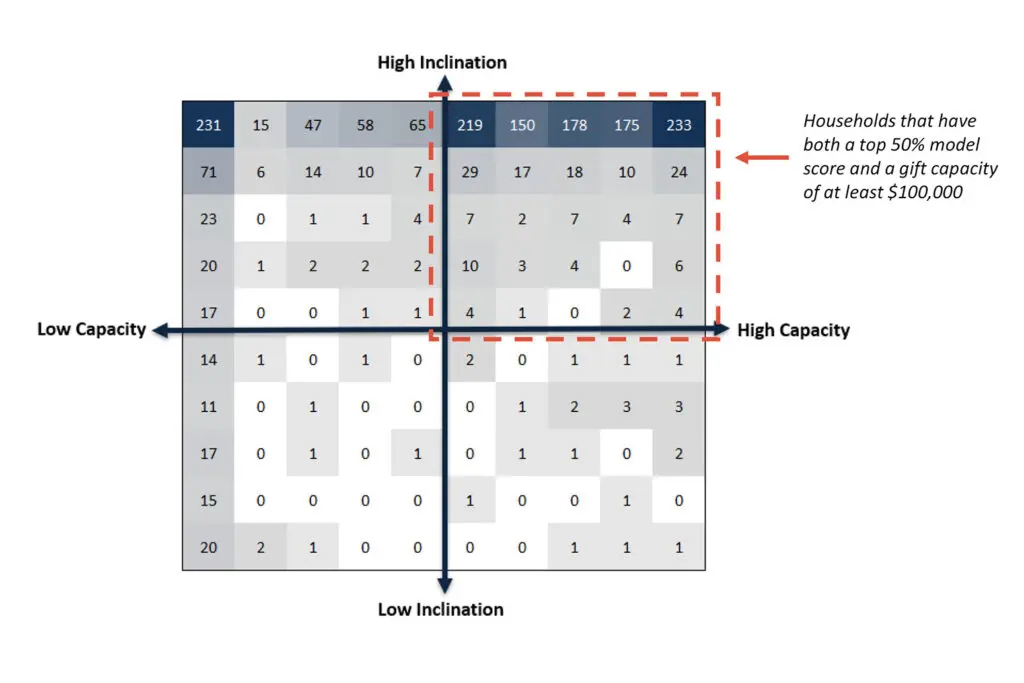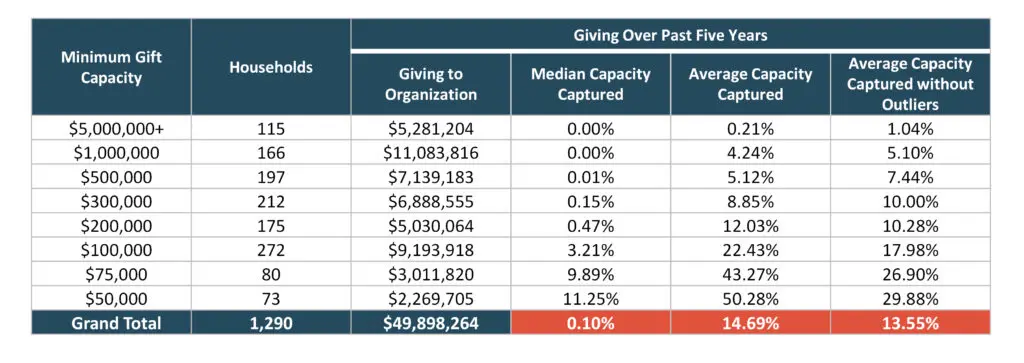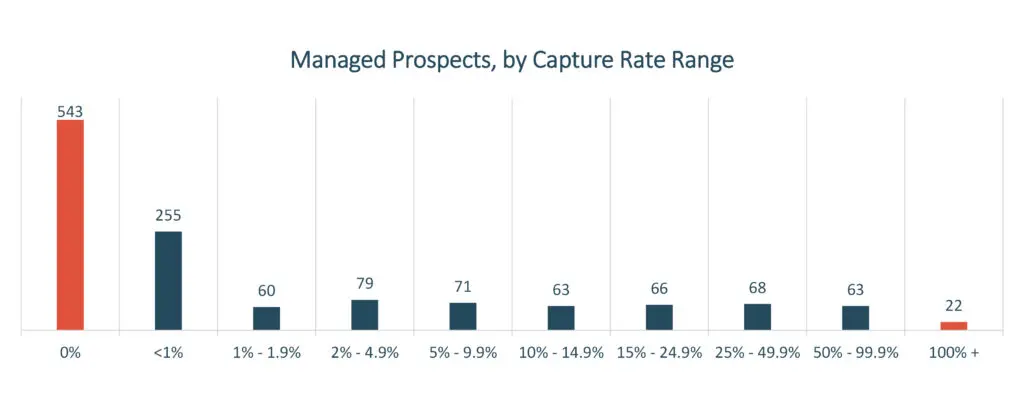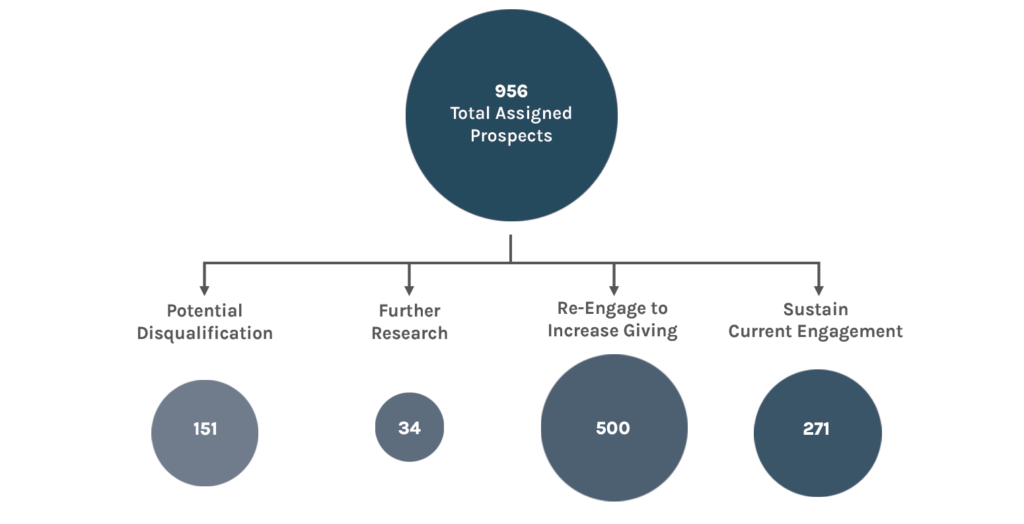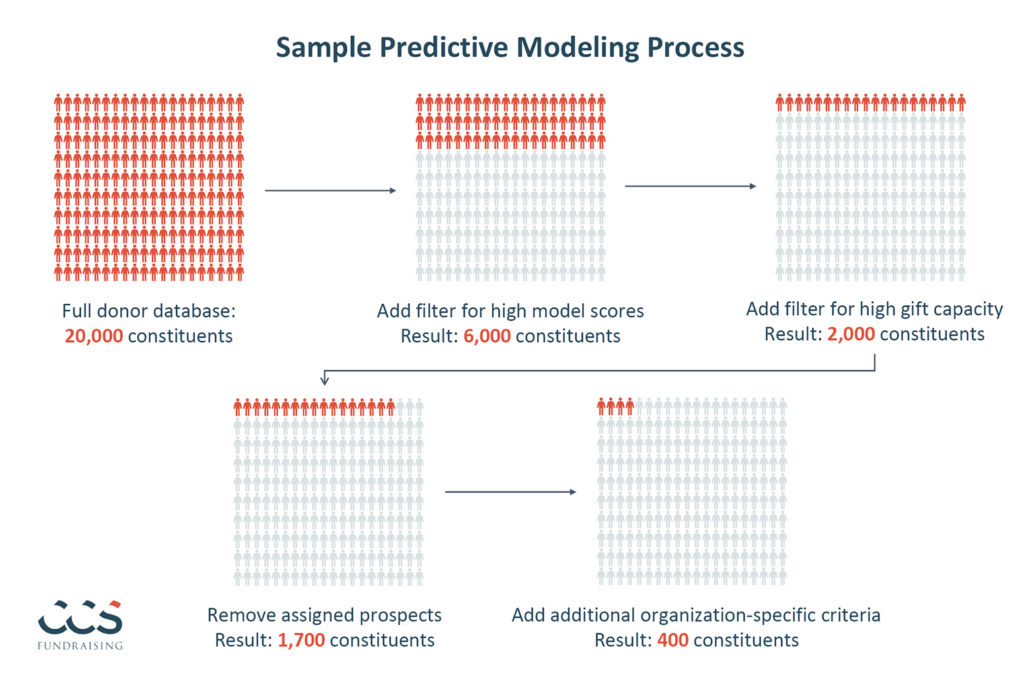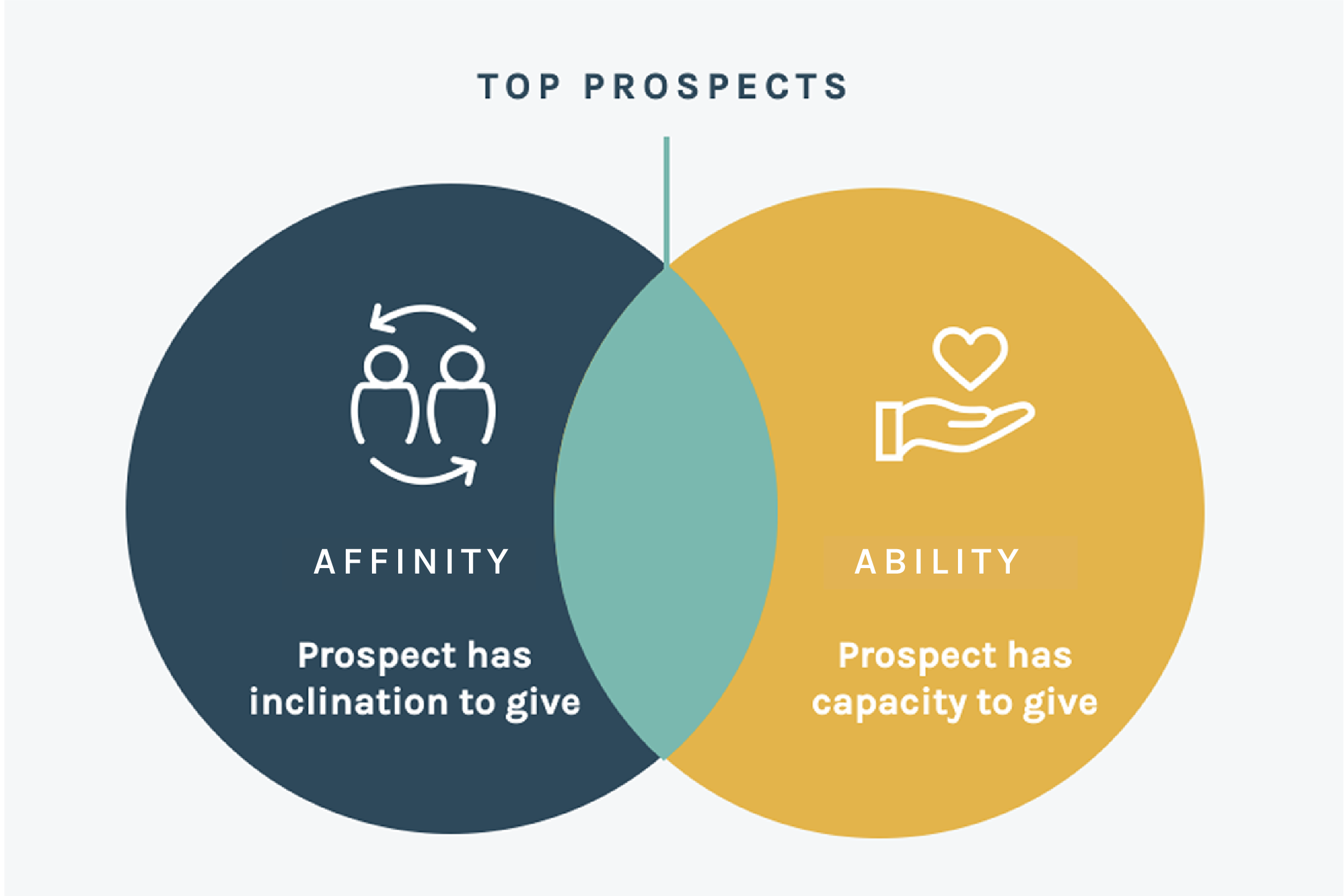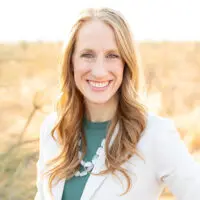In an era where personalization and efficiency are paramount, artificial intelligence (AI) in fundraising opens novel avenues for your organization to enhance its outreach and engagement strategies.
At the heart of this revolution lies the potential of Custom Generative Pre-Trained Transformers (GPTs), a cutting-edge no-code AI feature allowing users to create customized chatbots. This unlocks incredible potential for nonprofits, including tailoring donor communications, proposal writing, and processes to unprecedented specificity, efficiency, and relevance. However, “with great power comes great responsibility.” The landscape of AI tools, like Open AI’s ChatGPT, Microsoft Copilot, and Google Gemini, is rapidly evolving and reshaping the sector’s ethical boundaries and operational norms. Knowing how to adapt and evolve with these changes is equally as important as understanding what AI can do for you.
What is Generative AI?
At its core, AI is the digital simulation of human intelligence programmed to think and learn—a digital brain that can process information, make decisions, and even predict outcomes based on data.
Generative AI platforms play a crucial role for nonprofits by creating text, images, and ideas from large data sets. ChatGPT, for example, excels in understanding and interacting in human language, making it invaluable for creating personalized communications. The landscape of generative AI is dynamic and other platforms like Copilot and Gemini are gaining relevance as well. Viewing ChatGPT as the initial benchmark rather than the ultimate solution acknowledges the rapidly evolving nature of the field.
What are Custom GPTs?
The latest advancement to ChatGPT and Copilot suites for nonprofits is Custom Generative Pre-Trained Transformers (GPTs). These tailored, no-code user-created versions of ChatGPT carry out specific tasks or purposes aligning with an organization’s specific needs. Among other applications, Custom GPT models can be trained to match your nonprofit’s voice, values, and fundraising goals. It can act as an efficient assistant who understands your organization and provides insights and creativity to support your mission.
Custom GPTs allow fundraisers to automate and personalize donor communications and create compelling fundraising campaigns. They can also handle repetitive tasks, freeing your team to focus on the more strategic and creative aspects of fundraising—they enhance, rather than replace, human effort.
Custom GPTs are a Transformative Fundraising Tool
Imagine moving out on your own and receiving a toolbox as a housewarming gift. Inside, you find various tools: screwdrivers, a hammer, pliers, and some unfamiliar tools. Initially, you might only use those you recognize, like the screwdriver and hammer. However, you learn about the other tools over time and discover their unique purposes, realizing the toolbox’s full potential.
In the context of nonprofits, ChatGPT and other generative AI models are like this toolbox. Many organizations already use basic AI tools (e.g., the screwdriver and hammer) for tasks like writing an email or a thank you note. But just like the unused tools, there is untapped potential in the less familiar tools hidden in AI technologies. Custom GPT models may seem complex at first, but hold immense potential for those who take the time to understand and utilize them.
For example, a standard AI tool might help you draft a generic thank-you letter to donors. In contrast, a Custom GPT can be trained to write personalized messages tailored to each donor’s interests and history with your organization. This shift moves from generic, one-size-fits-all solutions to bespoke communication strategies that significantly enhance donor engagement and fundraising effectiveness.
The key message is that AI’s potential is vast and largely untapped. Just as you wouldn’t use a hammer for every household task, it’s essential to understand the various AI tools available and strategically apply them to maximize impact.
4 Benefits of using Custom GPTs for fundraising
In our experience, the main benefits of Custom GPTs for nonprofits include the following.
1. you can Tailor them to Your Brand Voice
One of Custom GPTs standout benefits is their ability to adapt to and replicate your organization’s specific brand voice. This ensures that all communication—whether donor outreach, campaign materials, or social media content—consistently reflects your organization’s values and tone. For example, if your nonprofit has a compassionate and empathetic voice, you can train a Custom GPT to mirror this style so that your messaging resonates deeply and authentically with your audience.
2. they can Enhance your Fundraising Strategies
Custom GPTs can revolutionize how you conceptualize and execute campaigns. They can assist you in drafting personalized proposals, creating dynamic content for different donor segments, and suggesting ideas based on data trends. This customization makes your campaigns more engaging and likely to succeed.
3. They can Streamline your Operations
We cannot overstate the way Custom GPTs enable efficiency. They can streamline routine tasks like donor communication and report generation, freeing up valuable time. Your team will be able to focus on more strategic and creative projects to help your nonprofit grow.
4. they are Scalable and Adaptable
As your nonprofit grows and evolves, so can your suite of Custom GPTs. They are designed to learn and adapt, ensuring they remain an asset regardless of your organization’s needs changing over time. This adaptability is crucial in the nonprofit sector, where shifts in donor interests and giving trends are common based on the season and year-over-year.
an illustrative example of leveraging Custom GPTs
Imagine a scenario at a large university where the development team plans to approach a donor interested in supporting a specific program and associated research lab. The team utilizes a Custom GPT trained with the university’s customized endowment language and giving opportunities. The AI helps draft a proposal aligning with the donor’s interests, incorporating the latest research initiatives and potential impacts of their contribution. It also suggests a tailored ask level based on the donor’s previous giving history, wealth capacity rating, and engagement, resulting in a highly personalized and compelling proposal, significantly increasing the likelihood of a successful endowment.
In these fundraising applications, Custom GPTs enhance human creativity and strategic thinking, acting as a force multiplier and enabling teams to achieve more with less in a way deeply aligned with their organization’s mission and values.
Ethical considerations and Limitations of Custom GPTs
Ethical AI use in fundraising revolves around transparency and respect for donor privacy. Verifying that your organization conducts all AI-driven communications and analyses with the donor’s knowledge and consent is paramount—it’s how you maintain donor data integrity and confidentiality. AI is a tool for your organization to enhance human connection, not replace it. Custom GPTs personalize communications, but the human element’s authenticity and sincerity must remain at the forefront.
AI has a limited ability to Understand Human Nuance
While ChatGPT, Copilot, and Gemini can process and generate information based on data, they lack the innate human ability to fully understand complex emotional nuances and ethical considerations. This limitation is particularly evident in sensitive situations, such as communicating with a donor who recently experienced a personal loss or during crisis communications. In these cases, a human fundraiser’s nuanced understanding and empathy are irreplaceable and crucial for reviewing all AI-generated communications.
Artificial intelligence is Not a Standalone Solution
It’s also important to recognize that AI is a tool, not an end-state solution. Relying solely on AI for all fundraising aspects can lead to a lack of personal touch and potentially overlook unique opportunities only identifiable to humans. We recommend that you take a balanced approach, with AI complementing your human skills and intuition.
Regular Monitoring and Updating of ai systems is crucial
AI is rapidly evolving, as are its ethical considerations and best practices. Regularly updating and monitoring the AI systems for biases, inaccuracies, or ethical concerns is crucial to ensure the technology aligns with your organization’s values and current standards and continues to serve your mission effectively and ethically.
Generative AI Outputs require Editing
Another Custom GPT consideration is that you cannot rely on the output as-is. For example, ChatGPT has been known to write untrue or exceptionally biased statements. Similarly, the dangers of making a custom GPT include misuse, users getting access to proprietary data, and harm to an organization’s brand. Do not use any document or data that you do not want to become public in these custom GPTs.
there are data privacy CONCERNS around ai use
The fundraising opportunities offered by ChatGPT and other generative AI tools are not without any ethical and legal concerns. ChatGPT, Copilot, and Gemini are open-knowledge AI models, meaning all the information they gather comes from what is publicly available on the internet (although ChatGPT and Copilot lag a couple of months behind in their respective knowledge bases), as well as any data they collect from users. This can cause apprehension: how can we use AI models while ensuring data safety? How can we adhere to data and research policies so that we can be proud of the work we do through AI? How do we ensure that the work remains ours?
options to maintain Data Privacy with AI usage
Generative AI models use all the prompts, responses, and information fed into them as additional training material. This feature is a crucial part of machine learning, but providing a chatbot with confidential information may, unfortunately, also breach data privacy policies.
What are your options for maintaining data privacy?
- Offer anonymous and nonspecific information: Opt to be more conscious of how precise you are in information sharing. Rather than providing all the necessary information, it can be helpful to curate slightly more general prompts. How can you find a balance between altering prompts to allow for individualization and avoiding giving away too much private information?
- Pay for data privacy: Custom GPTs offer an additional settings option to turn off ChatGPT’s ability to learn from your data. This setting is locked behind a paywall but is currently the only way an individual account can ensure that confidential information is not leaked.
Regardless of your approach, it is important to confirm your AI engagement aligns with your institution’s risk and data protection policies.
There are also PLAGIARISM AND ETHICAL concerns around ai use
Another concern is regarding ownership. How can you feel that AI-produced work—even a rough draft—is still the result of your efforts? While generative AI chatbots appear capable of creating individualized content out of thin air, this is not entirely the case. Generative AI cannot generate anything nonexistent; it mimics reality but does not create novelty. Ultimately, we must curate accurate, well-developed prompts if we want ChatGPT or other models to create a useful draft document.
To address ethical concerns, fundraisers using AI chatbots must be extremely conscious of how they craft their initial prompts and follow-ups, as well as how they review, fact-check, and work from any of their responses. Take the steps to transform the AI model’s writing into your final deliverable, a process requiring time and effective planning.
While AI’s efficient, customizable generation is not without drawbacks, knowing what to be vigilant of is the best way to maximize what generative AI can do for you.
Custom GPTs are the Future of Fundraising
As we look to the future, one thing is clear: integrating AI in nonprofit fundraising is not an option but a necessity for those looking to stay relevant and effective in a rapidly changing world. Embracing AI with a thoughtful, strategic approach will enhance your fundraising efforts and assure that your organization continues to make a meaningful impact in the communities you serve.
However, the journey to effectively integrating AI into your fundraising strategy requires a deep understanding of the technology, a commitment to ethical practices, and a readiness to adapt to continually evolving tools. We encourage you to continue educating yourself with our growing library of AI resources and reach out to CCS Fundraising if you need a customized partnership.
More Insights
How to Strengthen Your Donor Portfolio With Data Analytics
Learn how to effectively analyze, refine, and refresh your donor portfolio to secure long-term fundraising success.
How to Analyze CRM Data: The Hidden Power of Your Database
Unlock the potential of your organization’s CRM and data management techniques to secure long-term fundraising success.
